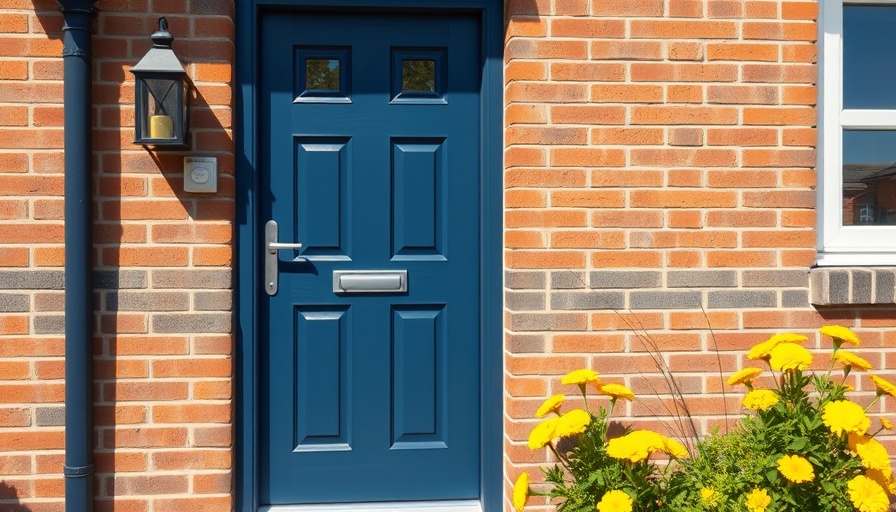
Can You Revamp Your UPVC Doors? Discover DIY Painting!
For eco-conscious homeowners looking to enhance their home’s appearance while being mindful of the environment, painting UPVC doors is an excellent option. Not only does it breathe new life into a space, but it also extends the lifespan of existing materials, reducing waste. Here’s how I transformed my UPVC door from an unsightly brown to a stunning anthracite grey six years ago, with results that still impress.
The Journey from Drab to Fab
When we purchased our home a decade ago, it was in desperate need of updates. Facing the financial constraints of such renovations, tossing out a perfectly functional UPVC door felt wrong to me. However, its dated brown wood-effect finish did nothing to enhance the aesthetic of our home. In our quest to update, we were determined to transform rather than trash.
Despite my initial concerns about how well the paint would withstand the rugged Scottish climate, I opted for a DIY paint job instead of investing in a costly replacement. The outcome was better than expected, proving that a little creativity and the right materials can yield substantial results!
Choosing the Right Paint: A Game Changer
One of the foremost questions was, what paint should I use for UPVC doors? My extensive research led me to Zinnser All Coat Exterior paint, known for its durability and professional finish. This paint is especially formulated for UPVC surfaces and has been widely recommended in DIY forums and tutorials. I chose the ‘Anthracite Grey’ color, which turned out beautifully.
For those hesitant to try it, rest assured that this is not a sponsored post; I shared my experience based on personal use and success. You can purchase this paint through JDC Paints or Rawlins, with options for various color shades to fit your preferences.
Matt vs. Satin: Which Finish Should You Choose?
Another consideration was the finish of the paint. My initial application used a matt finish, providing a modern and sophisticated aesthetic. However, for those who prefer a bit of sheen, the satin finish is also an option. It’s essential to consider the look you want to achieve as well as the maintenance and durability of the finish.
To be transparent, I experienced some chipping after a year with the matt finish. This minor drawback highlighted the benefits of investing in a quality satin option if you desire a more resilient surface.
Preparing for Success: Tips for Your Project
Preparation is key to a successful UPVC door painting project. Here’s a streamlined guide to ensure you’ve covered all bases in your effort to transform your door:
- Cleaning: Thoroughly clean the door to remove dirt and grease. A simple mix of warm soapy water will suffice.
- Sanding: Lightly sand the surface to ensure the paint adheres well. Use fine-grit sandpaper to avoid deep scratches.
- Priming: Apply a coat of primer designed for UPVC surfaces if your chosen paint doesn't include it. This step helps the paint bond better and provides an even finish.
Potential Challenges and Solutions
Every DIY endeavor comes with its own set of challenges. One of my major issues was paint drips, which were frustrating. I learned that applying thin layers and using a quality brush can make a world of difference. Also, avoiding painting in direct sunlight helps prevent premature drying, which can cause uneven textures.
Moreover, it’s vital to keep an eye on the weather. Rain or excessive humidity can affect drying times and the final outcome.
Final Thoughts and Next Steps
Ultimately, painting your UPVC doors can be a rewarding project - it’s cost-effective and environmentally friendly since it minimizes waste. With a little careful planning and the right paint, you can achieve a striking new look that enhances your home's curb appeal. If my journey inspired you, consider embarking on your own painting project!
As a call to action, I encourage readers to share their experiences and any tips they discover along the way. Engaging with our community can foster a wealth of knowledge and support as we all navigate the path toward eco-conscious living.
Is it time to reinvigorate your UPVC doors? Let’s do this!
 Add Row
Add Row  Add
Add 




Write A Comment